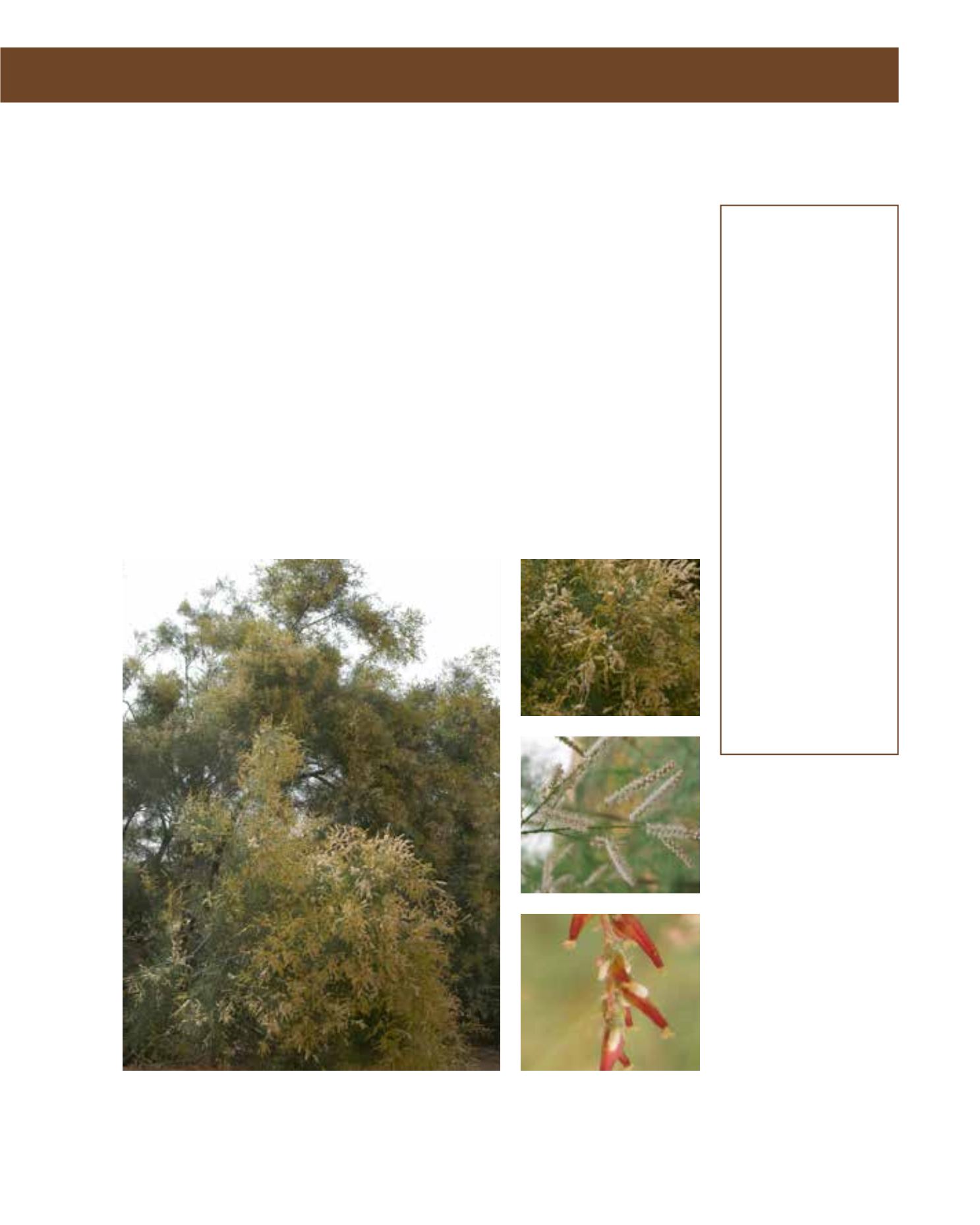

GENERAL
Origin
:
sub-tropical
Vigour
:
slow-growing
Humidity
:
extremely arid,
very arid, semi-
arid
Propagation :
direct sowing,
sowing and
pricking out,
cuttings
Maintenance :
low
CONDITIONS
Dessication :
resistant
Stagnant water :
resistant
Irrigation
:
low
Salinity/ppm :
very high (16000
ppm)
Hardiness
:
-9°C
SHAPE
Type
:
tree, shrub
Height
:
3 m-8 m
Spread
:
2 m-6 m
Foliage
:
evergreen
FLOWER
Colour
:
purple
Size
:
10 cm
Period
:
March - May
FRUIT
Type of fruit :
capsule
Fruit size
:
3 cm
Toxicity
:
inedible,
poisonous
Tamarix nilotica is known as Nile Tamarisk or Manna Tamarisk, in Arabic athel, abal or tarfa.
The name Manna comes from the fact that insects would suck the sap of these Tamarisks, and
then excrete the honeydew-like substance as part of their metabolism. These sweet Manna balls
were used by the Bedouins as nourishment. They also had a medicinal use as an anti-inflamma-
tory and antibacterial agent against throat and gum inflammation. A shrub or small tree, its area
of distribution lies in the Arabian peninsula and northern Africa. The preferred locations reach
from Mediterranean wood- or shrublands up to extreme deserts. The slow, irregularly growing
tree reaches a height of 8 metres. It is often multi-stemmed, and the foliage is grey-green. The
leaves are squamate. The purple flowers stay in panicles together. These panicles are usually 10 cm
long. Flowering lasts very long. The fruits are capsules. Propagation is by direct seeding and by
cuttings. Tamarix nilotica can withstand high salinity. It has no special requirements in relation
to soil or irrigation. It is adapted to the desert, with its hot winds, droughts and heat. The Manna
Tamarisk is useful in open country as a coloniser, bank stabiliser and for environmental conso-
lidation because of its invasive roots. The small tree is attractive in groups or massed planting.
Woodland edges, pond or stream edges, as in its natural habitats, will be the best recommendati-
on for its use in landscape design, for example in Wadi Hanifah or the Al Hair Lake Area.
294
Tamarix nilotica,
Tamaricaceae
Nile tamarisk,
athel, tarfah
















